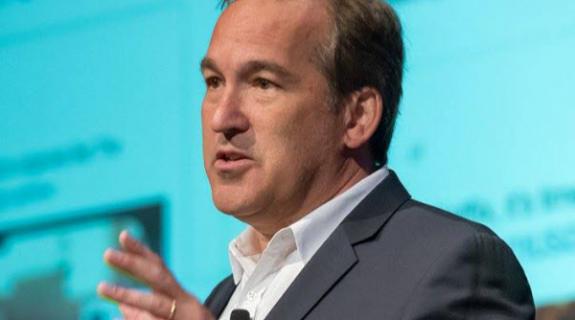It’s true: cord cutting is real and linear TV is on the decline. But the place where content meets screens is thriving, according to market research firm SmithGeiger.
“TV is actually bigger and better than ever before,” Andrew Finlayson, EVP of digital and social media strategies, told broadcasters and publishers gathered at PromaxBDA’s Station Summit in Las Vegas.
“It starts in the morning, literally the moment your audience opens their eyes,” he added, breaking down the many different ways marketers can connect with viewers on multiple devices throughout the day. Based on a study with Stanford University where SmithGeiger had access to student’s smartphones 24/7, Finlayson highlighted key ratings bumps at 7 a.m., noon, the evening during primetime, and even into the wee hours of the night.
“Think across screens,” he said, pointing out that most people have two screens at any given time. With more viewers streaming shows, linear TV is suffering as a result, and for the first time in SmithGeiger’s survey streaming has surpassed live, 53 percent to 52 percent.
But, since more than two-thirds of viewers who are watching primetime are simultaneously on another device, mainly social media, marketers can use this to their advantage through posts that encourage users to interact with live programming.
“If you don’t have a mobile strategy, you really don’t have a marketing strategy these days,” Finlayson said.
While there’s no denying a behavior shift to streaming sites, often before even checking out broadcast or cable, as well as the erosion of DVR because viewers get their shows on demand, in a recent SmithGeiger study 86 percent of people still picked a broadcaster in their top 10 desired channels, with 82 percent turning to ABC, CBS, NBC and Fox.
“We have powerful brands that people still want in their lives,” Finlayson said.
Live events such news—which 53 percent of viewers still watch linearly—and sports broadcasts are key to driving this behavior. Finlayson pointed out that younger demographics are becoming less inclined to watch live sports on television because they can wait until the next morning to see all the highlights.
“We as broadcasters need to zero in on that and give them reasons to watch live,” he said. “One of our big opportunities and challenges is to convince young people they need to watch it with their friends live and not wait.”
The trick, he said, is to make them want to watch live events with a screen in their hand.
The use of social media to find content and talent to consume is only going to grow, so broadcasters need to meet the expectation of viewers to have discussions with people who like similar shows on platforms such as Facebook, Twitter and Instagram that they use to make decisions on what to watch.
“Help create conversations around that great content,” he said. Word of mouth is still a very powerful way to get people to reach for the remote, so consumer reviews, and what’s being on social media, matter, especially to the 18-34-year-old demographic.
“The bottom line is TV is popular with them because it’s a social experience,” he said. “They love to find out about the people involved with the shows. When we were young, we had to pick up People Magazine. Now, they can find any details about the stars, and have a relationship with them, on social.”
Marketers can also tap into voice activated devices such as Amazon’s Alexa, and create visual experiences with less words, and more powerful images.
“You’ve got to wake up in the morning and say, ‘how do I create anticipation around some of the great content you know is going to be the television set,” he said. “Get people to share that excitement on social and digital.”
The call to action boils down to true brand interaction where the audience makes a real connection.
“Ultimately you’ve got to carry on a conversation,” Finlayson said. “You can’t just post on social media and walk away.”
[Image: SmithGeiger]
Tags: station summit 2018













































__twocolumncontent.jpg)











